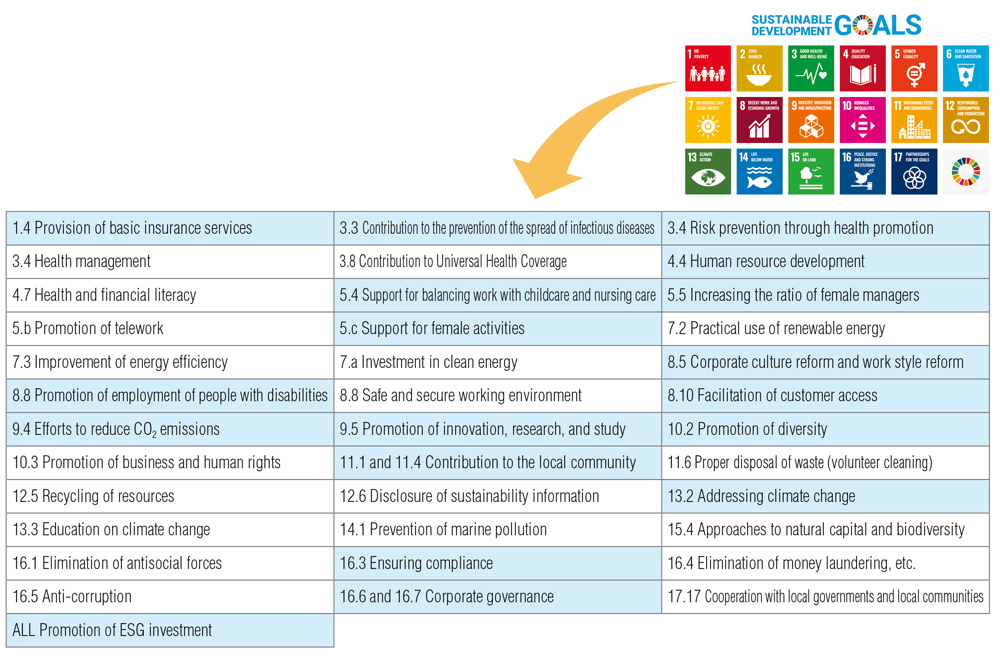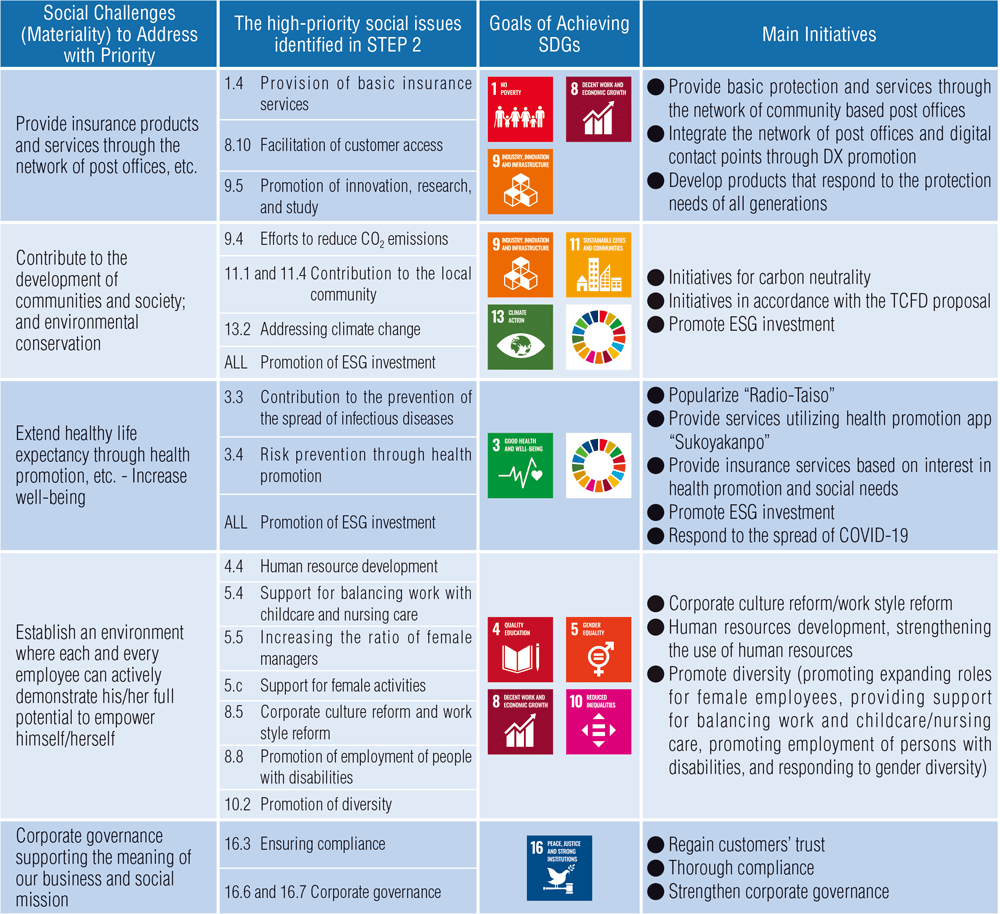Materiality Identification Process
Along with the formulation of the Medium-Term Management Plan (FY2021-FY2025), we have reviewed our materiality based on what we aim to achieve.
Identification Process
STEP1 Extracting social issues
From the 169 specific targets for achieving the 17 goals of the SDGs, we have extracted social issues for the Company, which runs a life insurance business. (Colored items are those that were newly added in this review.)
- (*)
- The number assigned to each social issue is the one for the 169 targets of the related SDGs.
STEP2 Identifying materiality
We identified high-priority social issues by prioritizing social issues extracted in STEP 1 based on the two standards: "importance for us (strategic importance)" and "expectations from stakeholders."
【Importance for us (strategic importance)】
Selected based on our management philosophy, social mission (purpose), and the basic policies of the Medium-Term Management Plan (FY2021-FY2025)
【Expectations from stakeholders】
Selected based on opinions received from stakeholders, such as customers, investors, employees and local communities, and the international community (see the next table)
[Reference] Process of identifying expectations from stakeholders
| Stakeholders | Identification process |
|---|---|
| Society | Reviewed government and industry guidelines and additional elements of evaluation (questionnaire) items related to third-party assessors and SDGs |
| Shareholders and investors | Reviewed expectations of the Company from comments received during shareholder relations activities |
| Customers | Reviewed requests, comments, etc. to the Company from customers based on the voices of customers |
| Employees | Conducted employee questionnaires to confirm the social issues for the Company to prioritize |
As a result, we have identified the following as high-priority social issues.
| 1.4 Provision of life insurance products and services | 3.3 Contribution to the prevention of the spread of infectious diseases | 3.4, 3.8, and 3.a Health promotion and health management | 4.4 Human resource development |
| 5.4 Support for balancing work with childcare and nursing care | 5.c Support for women's advancement | 8.5 Corporate culture reform and work style reform | 8.8 Promotion of employment of people with disabilities |
| 8.8 Safe and secure working environment where employees can work comfortably | 8.10 Designing an environment where products and services are easy to access | 9.4 Efforts to reduce CO2 emissions | 9.5 Promotion of innovation, research, and study |
| 10.2 Promotion of diversity | 10.3 Promotion of respect for human rights | 11.1 and 11.5 Contribution to the local community | 13.2 and 13.3 Addressing global warming and other climate change issues |
| 15.1 and 15.4 Activities to protect nature and ecosystems | 16.3 Ensuring compliance | 16.7 Corporate governance for sound management | 17.16 Promotion of sustainable investment |
STEP3 Determining materialities
We organized the high-priority social issues identified in STEP 2 into the following five materiality items, discussed and determined them at the Sustainability Committee and Executive Committee, and reported them to the Board of Directors. We also set KPIs for monitoring the progress of each materiality.
- (*)
- The 17-color wheel means that the promotion of ESG investment is related to all 17 goals of the SDGs.
[Reference] Internal decision process
In addition to the above, we also sought opinions at an internal meeting of external experts to consider further revisions.



